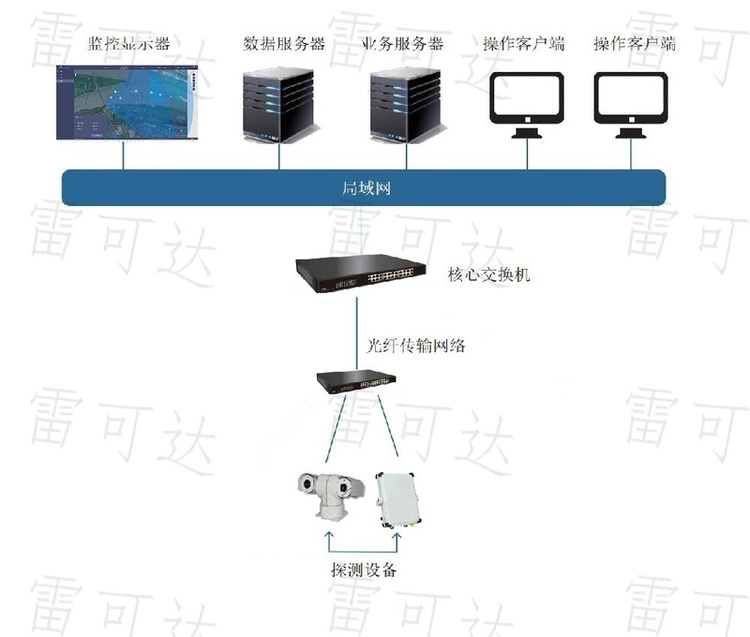Pusat Berita

Drone Detection Radar Manufacturer: Comprehensive Analysis of Core Knowledge Points
Lakeda, a manufacturer of drone detection radars, points out that radar, as a critical electromagnetic sensor, detects target distance, speed, and方位 by transmitting and receiving electromagnetic waves. It is capable of operating in all weather conditions and resisting harsh environments. Since its application in World War II, radar technology has continued to evolve, with a wide range of frequency bands, and has been extensively used in military, socio-economic, and scientific research fields.
Baca selengkapnya
Lakeda, a UAV Detection Radar Manufacturer, Analyzes: Comprehensive Introduction to Radar Types and Features
This article introduces various classification methods of radar systems, including by function, signal type, measurement parameters, etc., and provides a detailed overview of the technical characteristics and application scenarios of different types of radars, offering reference for the selection and industry application of drone detection radars.
Baca selengkapnya
Drone Radar Technology: A Comprehensive Analysis of Industry Application Scenarios and Innovative Solutions
The integration of drone-mounted radar technology brings three major innovative applications: breaking through low-altitude detection limitations, enabling flexible radar testing and validation, and establishing a collaborative communication relay platform. This significantly expands the detection range and enhances system performance, offering new solutions for the radar industry.
Baca selengkapnya
Drone Radar Detection Technology: A Comprehensive Analysis of Equipment Features and Development Trends
The manufacturer of drone detection radar, Lakeda, analyzes the development trends of radar detection and countermeasure technologies, highlighting that multi-band integration and a combination of soft and hard kill capabilities are key for the future. The system offers four core advantages: cost-effectiveness, reliability and security, ease of maintenance, and rapid response, making it suitable for a wide range of security applications.
Baca selengkapnya
Principle and Manufacturer Analysis of Drone Detection Radar Systems: A Comprehensive Guide to Technology, Selection, and Brands
This article analyzes drone detection radar systems and solutions, discussing the challenges faced by detection technologies such as radar, electro-optics, and acoustics, including low RCS, weak infrared signatures, and complex environmental interference. It also highlights that multi-technology collaboration is a key direction for enhancing detection efficiency.
Baca selengkapnya
Top Ten Application Fields of Drone Detection Radar, How Many Do You Know?
Drone Detection Radar (LiDAR) efficiently achieves three-dimensional mapping by emitting laser pulses and precisely measuring the reflection time. It is widely applied across eight major fields, including accident forensics, agriculture and forestry, power inspections, topographic surveying, and archaeological excavations, significantly enhancing data accuracy and operational efficiency.
Baca selengkapnya
Portable Personal Radar: Core Features, Application Scenarios, and Comprehensive Guide to Selection
This article introduces the lightweight, low-power consumption, and high-resolution features of the portable individual radar, along with its applications in military, search and rescue, and security fields. It also provides key guidelines for selection, such as detection range and battery life.
Baca selengkapnya
Drone Detection Radar: Comprehensive Analysis of Advantages and Implementation Strategies in Smart Agriculture
Agricultural drone detection radars face complex environmental challenges during operation, such as ground echoes and diverse obstacles. The new generation 4D imaging radar system offers high resolution and sensitivity, enabling comprehensive perception of obstacles within 40 meters and automatic bypassing. It is suitable for various terrains, ensuring stable and safe drone flight. For technical details and application solutions, feel free to contact us!
Baca selengkapnya
Qingshan Bridge Reinforcement and Protection: Comprehensive Analysis and Construction Key Points of the Golden Bell Shield Technology by Wuhan Lakeda
This is a high-tech collision warning system specifically designed for inland river navigation. It integrates radar monitoring, AIS positioning, and audible and visual alarms, enabling all-weather monitoring of waters around bridges. The system intelligently alerts vessels of deviations, effectively ensuring the structural safety of bridges and the smooth flow of waterways.
Baca selengkapnya